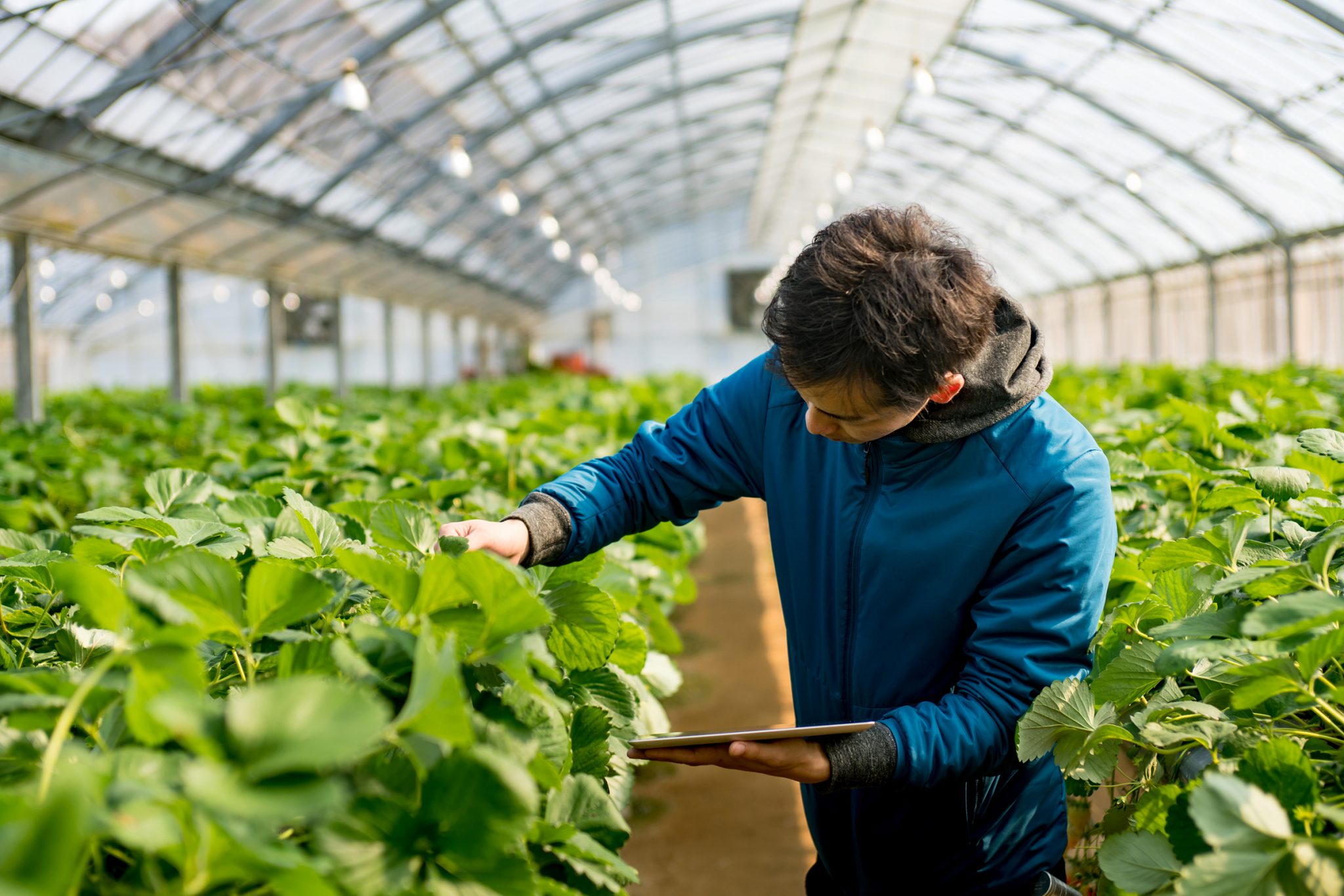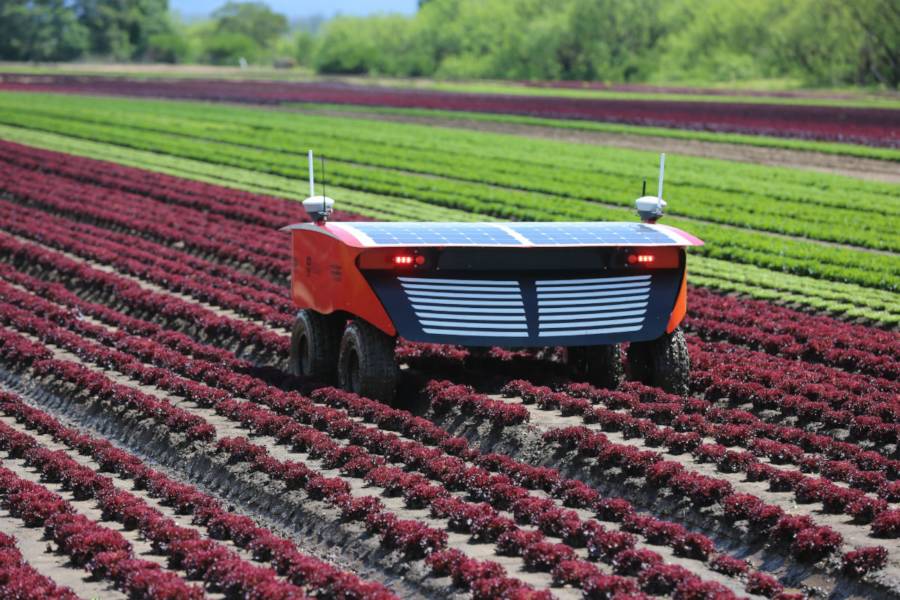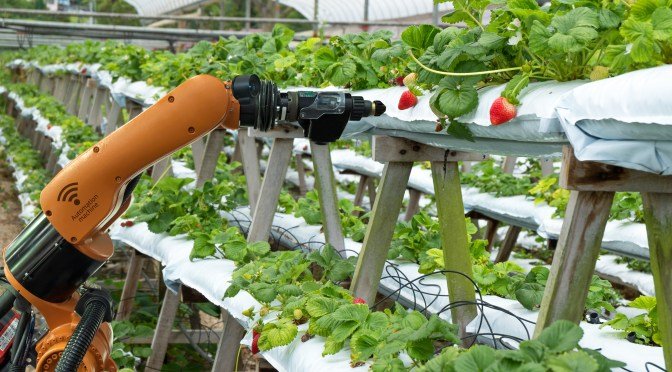
Contrary to popular belief, the Agriculture sector is more welcoming of experimental technological advances i.e AgroTech than one would assume. New-age tech such as drones, AI (Artificial Intelligence), robots and more are being incorporated enough in areas of research or trial-based field experiments to prove otherwise. Moreover, monitoring systems for crop fields capable of machine learning (patterns, movements, trends) are being tested actively to see how they can be used in the fields of manual fruit picking & other harvest technologies, irrigation system workings, identification of bad crops/weeds or any particular parts of the field, soil and atmosphere controlling and others.
Table of Content
The latest reports by UN FAO (Food and Agricultural Organization) from 2017 claim that the population will grow by 2 billion in the next 32 years, amounting to a total of a 9.2 billion global population. With almost 2 billion more people to feed in such a short span, without more farmland being set up, the task is close to impossible. The solution now lies purely in the optimization of the already-existing farms (crops and cattle). This is where the main abettor – Artificial Intelligence, comes in.
Farms are large pieces of land where one or more crops are grown. The farm may or may not have cattle. Some farms only have poultry and other cattle. Considering how large the farmland is, the owners may not always know what is actually up with their crops/animals at all times. Human error is mostly to be accountable for in these cases since we are not fully always aware of our lands. For example, on a big wheat farm, the farmer on finding some affected crops will probably just spray the whole field with pesticides even if it is only an area that is required to be sprayed. In this case, the soil composition is a key insight into the plant disease. A validated update on soil constitution may not always be available to the farmers. Now in cases where AI drones have been used to regulate and maintain soil composition with pesticides, the AI drones have been very capable of narrowing down the exact section of the farm that required the pesticide treatment. Apart from being cost-effective, this is also invariably saving the other healthy plants from unnecessary exposure to pesticides, ensuring the healthiest produce for the masses.
For any robot or machine to work in the field, it needs to first have an intelligent database system in place to direct the movements and actions of the on-field robots. There needs to be a pattern of motion, a reasoning for every instruction sent from the central system. This is where ‘machine learning’ comes in. What we are basically trying to do is make our machines do what we have been doing for centuries. And how do we teach everything we know? Well, this is exactly where AI comes in. We need a system which can learn, observe and rationalise its way towards a solution that will instruct the on-field robot.

The AI will have in place machine-learning algorithms. These algorithms will be capable of taking in heavy data, identifying the patterns and then with the help of statistical probabilities, deciding the course of action to be taken.
When speaking of machine-learning, this is primarily the most important base of our robotics. Google recently mastered this in the case of the self-driving cars in Silicon Valley. In the case of the car, the AI was fed data which was basically the digital representation of the streets of Silicon Valley. From every street light, to stop signs, to dimensions of the roads and curbs and angles of the crossings, the AI was given a complete detailed digital representation of the street for it to follow. In addition, human driving patterns and other such street patterns were also identified and incorporated. People who have ridden in the self-driving cars state that it is almost as though a human was driving the vehicle. The machine had learned and incorporated all the behavioral patterns whilst on the road.
When coming to agriculture, the same needs to be done for the AI. A digitized map of the farm has to be provided to the AI, complete with ideal conditions and dos and don’ts. In cases where something goes wrong at the farm, the AI will be able to pick up on it and decide on the course of action to proceed with for that particular problem. This is a highly intelligent system of algorithms and self-learning technology that we are dealing with.
It is estimated that 70% of the world’s freshwater goes to irrigating farmlands. If this is true, then we are clearly not fully utilizing all the water. Many companies have been working on making irrigation systems autonomous for a while now. The problem is not in the labour required but in the correct and full usage of the water. Many countries over the past decades have expressed concerns over the dangerously low levels of water available in the future. Plants in actuality do not require a lot of water per day. Now, if the water can evenly be carried to the plant without any wastage using effective methods like drop irrigation or micro-spray irrigation, you could even direct pesticides in such controlled proportions!

We earlier mentioned Google’s self-driving car that was prototyping in Silicon Valley. On applying the same principles to an agricultural field, we see that it is a lot simpler since there is no on-going traffic and pedestrians here in this case. However, we are sure that to put safety measures in place, the automated driverless vehicles could have some sort of GPS sensors to ensure safety of any prying animals or even humans in the fields! If such self-driving farm vehicles ever find their way to the market, it is sure to certainly put the pressure off from the manual force. Instead, they could be better trained by the technicians to eventually take over the complete overlooking process.
Traditionally, we have always manually checked up on the crops to ensure a healthy produce. However, there is still a large portion of every large scale farm produce that has to be done away with. This is a great loss of resources. Just like how irrigation systems can be set up in place for optimal results, autonomous D&A (Detection & Analysis) systems can also carry out operations using practical and light-weighted machines like drones. Electromagnetic imaging and 3D scanning using lasers is incorporated in these systems to ensure precision working. One such device is the Harvest Croo berry picker. The fundamental control systems are run using ‘machine vision’ and basically sensor fusion technology to identify the exact location of the berries and fruits. One drawback of this system is that it could put a strain on the manual labour force that depends on this activity for income. After all, being replaced by intelligent machines is not a good sign.

Augmented reality has made identification processes like facial recognition possible. This same technology can now be extended to animals, which can make cattle identification possible. We are still not sure how such systems will be beneficial in the monitoring of the health of each animal. However, one feature of such systems would be to keep a close eye on the general behavioural patterns of each animal. For example, if an animal is spending more time sleeping or resting than usual, this could be some sort of an indicator that the animal in question might be unwell. There are no functioning systems currently being used to our knowledge for us to be able to comment much on the credibility of this concept.

These are just a few of the now emerging tech in the agro field that are in the prototyping phase. Agricultural research is emerging as a heavily funded field when it comes to research on how new technological systems can help us take the strain off while also mass producing quality food. Many experts in the field have commented on how this will have a great impact on the employment rate, especially in developing countries which rely heavily on manual labour on the field.
One more factor to be considered here is the cost of setting up such highly automated farms and also maintaining it. Ideally, the majority of the cost would have to be in the actual setting up or purchase of machinery. The maintenance of the machinery and software updates would be additional and rare charges. On the contrary, this could prove to be cost effective if it actually helps minimise the amount of waste produce or even improve the general quality of the crops. We will be keeping an eye out for any new advances in this sphere or on any update on tech execution on the fields.
For now, Agrotech is still a far way off from replacing traditional farming methods, but the future of food is not as far as we may think.
